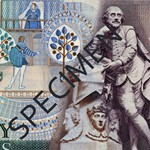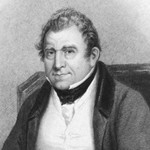Pre-decimal penny


Introduced: around AD 760
Withdrawn: 1 September 1971
Abbreviation: 1d
Materials used: silver (760 to 1797), copper (1797-1859), bronze (1860-1967)
The term 'penny' means a small Saxon coin. It pre-dates the £sd system.
Pennies in the £sd system date from around AD 760 when King Offa started the system in Mercia - the Midlands of present day England, (not the whole of England).
The abbreviation 1d stand for 'Denarius' or 'Denarii' (plural) a Roman penny.
Until the reign of Henry III (1216 to 1272), the penny was England's only coin. If people wanted half-pennies or farthings, they cut a penny in two or four. Henry introduced a gold penny worth 20d. It was not popular and did not continue. His son, Edward I, minted silver farthings, half-pennies and groats (4d). This was the start of the medieval system of currency which used silver coins for smaller amounts and various gold coins for larger values.
The silver penny remained England's basic unit of currency until the eighteenth century.
Copper pennies
The value of a penny was tied to the value of the silver from which it was made. The rising value of silver meant was no longer practical to make pennies in silver. They were too small.
Monarchs and governments were reluctant to abandon silver pennies. They were still minted, but mainly as Maundy money or gifts.
From 1797 pennies for general cirulation were minted in copper. The first copper penny had a raised rim. It looked like a cartwheel. Hence they were called cartwheel pennies. At this point a penny was worth 36p in today's money.
Bronze pennies
In 1860 the Royal Mint replaced copper with bronze. The bronze penny of 1860 was of similar size and design to the last penny minted in 1967. An 1860 bronze penny remained legal tender until 1971.
A penny in 1860 would be worth 34p. In 1971 when the penny went out of cicrulation, its value was 4p in today's money.








Comments